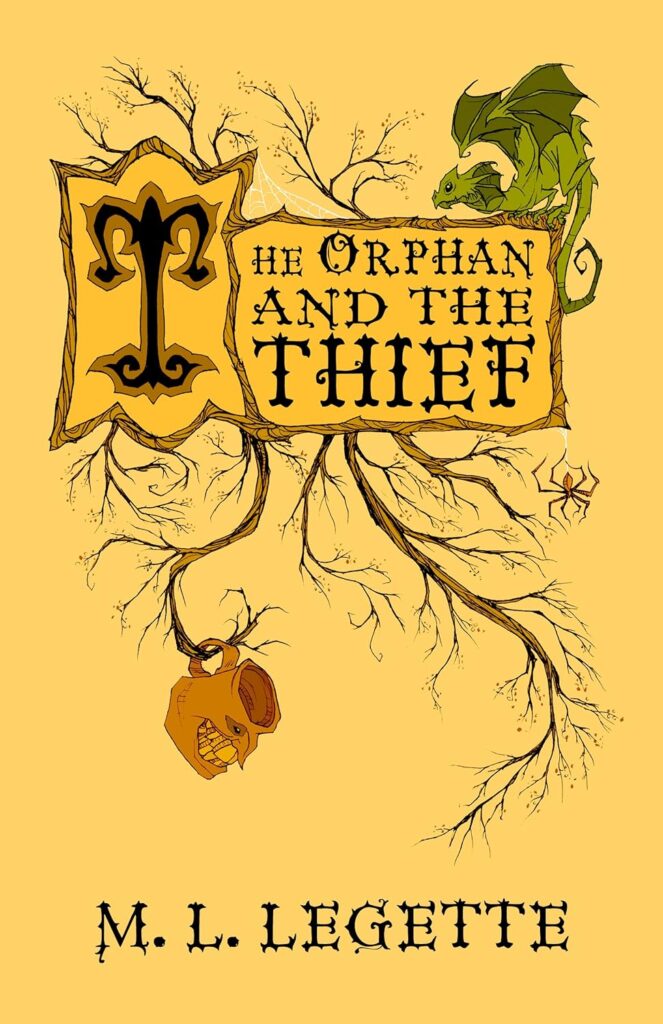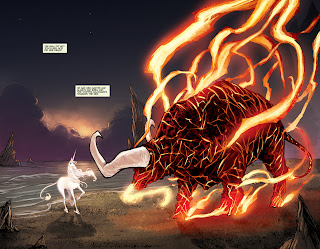Book Spotlight: Horns by Joe Hill

Book Spotlight: Horns by Joe Hill
NOSWAITH DDA, Beardies!
The BBC would like to apologize for the next announcement.
‘Tis I, Jessica, here with my first ever review on The Bearded Scribe, and I’m truly excited about it. I decided to start with one of my favorite stories because it’s very easy for me to discuss. I picked up this book because I love Stephen King and, being bored and carrying around 50 cents, saw his son’s book Horns at a Helping Hands store. It was about a week or so before I even opened this book. Frankly, it scared me. I don’t like reading about anything dealing with the Devil except The Bible. Even then, I get shaky and uncomfortable. I started reading on a night my daughter—not even two at the time—was running a high fever and needed constant rocking. I was so exhausted, and my brain was fried, so I grabbed the first book I could reach and started reading. Well, I couldn’t stop. She fell asleep around three in the morning but I couldn’t stop. I rocked her all that early morning and most of the next day just reading with my mouth gaping at this beautiful, heartbreaking novel. I cried just as hard as my daughter had been by the time we finished up Joe Hill‘s Horns. Right now, as it happens, I’m up with my five year old who is sick. She’s playing Final Fantasy V with her dad and watching me write.
{—PREMISE—}
IGNATIUS MARTIN PERRISH, that guy you see around town with the bad past everyone avoids, passes through the streets followed by not-so-silent whispered names. Murderer. Drunk. Waste. They all stare at “[t]hat piece of trash who killed his girlfriend and got away with it.” Iggy swears his innocence, but they know better. His brother is in show business, notorious for scums and charlatans. After all, weren’t they fighting when she left the bar?
Now, Iggy slinks past their eyes with a new sort of dread. He’s woken up to find a pair of horns growing from his temples. Also, people are confessing all their hidden dark secrets to him. People he doesn’t know, people who once looked at him with disgust, even his own parents and brother. Not only are they coming to him for confession, they’re seeking his permission to do these dirty deeds. Will Iggy give in to his newly-inherited powers of the Devil and show them a way to loose their evil, or will Iggy sacrifice his own soul to give them rest? If you knew the worst in people could you forgive them?
{—GEMS FOR WRITERS—}
1. Conflict...
IGGY PERRISH lives in a town where everyone around him accuses his girlfriend. He is a good-hearted guy, always trying to do the right thing, and his world has absolutely been destroyed. He battles alcoholism, depression, and a feeling of being isolated.
The night of Merrin’s murder, she announces she is leaving him. They have a terrible public fight and he’s last seen leaving the bar drunk and angry after her. Merrin’s conflict with Iggy isn’t as it seems. She’s actually been diagnosed with aggressive breast cancer; rather than have Iggy stay and watch her die, she wants him to go to college in London for a year. Her inner struggle is revealed in an all-Morse-code letter Iggy finds years after her death.
As if things for Iggy couldn’t get worse, his old best friend, Lee Tourneau, seems oddly immune to Iggy’s new powers of the Devil. If Iggy has the Devil’s power how is it Lee is unaffected? Their fight is not between good and evil but an evil which desires evil powers and an evil which desires forgiveness.
Iggy is also in conflict with himself. He’s grown horns out of his temples and can either lead people down to darkness or help them right their wrongs.
2. Evolution of a Character...
THE very first thing we see of Iggy is him barfing, drunk, and cursing his life. He’s drowning in depression at the loss of his only love, Merrin. He’s been accused of killing her and it has absolutely shattered his entire existence. Iggy, in retrospect, is a kind, smart, gentle guy. This is nothing like the Iggy we see today. His live-in girlfriend makes him miserable and he does everything he can to make her just as miserable. Iggy is a broken man.
With the addition of his horns, Iggy is able to see the evil inside the people around him. When his brother confesses to knowing who killed Merrin, Iggy is sent on a tailspin. He not only finds out Merrin was sick, but also she didn’t break up with him as he believed. Iggy’s brother announced he was there when Merrin was killed. He knows who did it and all the torture she suffered. He’s been carrying it for years and was only able to unload his mind with Iggy’s horns. Iggy is slowly consumed with his pain and rage. He sets a trap for the killer of his love, only to have it foiled by his brother’s coming to his aid. It’s either let him live or sacrifice his life.
Iggy goes from a slobbering drunk to a noble, utterly inspiration for how all should be. We should confront our evil impulses. Why do they exist within us all? I know for myself it’s difficult to face these thoughts sometimes. I end up asking myself, “Why on Earth did I just think THAT?” I’ve caught myself in deeds where I feel like I’m on the outside watching it happen, totally confused and screaming at myself to stop. This is exactly what Iggy must do in order to put Merrin’s spirit at rest. He must confront that primal beast within and let him loose or tame him.
{—RATING—}
{—CONCLUSION—}
HORNS forces its reader to examine themselves—to see the Devil inside. If you knew your father hated you, wished you dead, and wanted to commit suicide, could you forgive him these terrible things he spoke and tell him to live, or would you help him pull the trigger? In the end, Iggy must choose to save himself or his girlfriend’s true murderer. I was inspired by the love between Iggy and his girlfriend, Merrin. It’s such a beautiful and poetic romance, and very unexpected in an horror novel. Seeing Iggy battle this monster of a human—all the while facing his own Devil—is both heartbreaking and exhilarating. This story will leave you breathless.




















